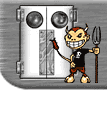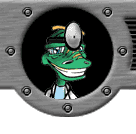P
|
Gross and fine motor coordination becomes consolidated.
Feelings of
prowess and being in control of the self are often evident.
This is generally
a time of good health - the child may recall illnesses in a retrospective
manner.
Interest in
sex continues and may increase, but awareness or curiosity is seldom
shared with adults.
A few girls
may begin to acquire secondary sex characteristics.
It is less
likely that a boy actively enters puberty at this age.
Competitive
use of physical skills is typical. Youngsters often enjoy team participation
and may join in formal team sports.
|
E
|
Industry
vs. Inferiority
This is considered
an age of equilibrium - often the last until 16.
There is usually
a feeling of consolidation and comfort which allows the child to
be moderately expansive.
The child often
expresses a sense of wholeness and being pleased with the self.
This is also
the age at which mental health and juvenile records note entrance
into delinquency, neurotic behavior patterns which may continue
through life. If a child is rehearsing and showing signs which are
consistently atypical and inappropriate, seek help through referral
and follow it up.
This is also
the age of the dreamer - dreams of future greatness, presidency,
greatest pitcher in the league, the grand slam or slam dunk champion
of the future.
|
P
|
The child is firmly set in black and white "fairness" morality.
Fair tends
to mean "am I getting the best of the deal?" since the child is
only dabbling in seeing others outside of personal meaning.
Deal making
becomes pleasurable.
Payback begins
to be valued highly.
This is an
excellent time to introduce and use natural and logical forms of
consequences.
The child is
generally relatively willing to obey and to conform to adult expectations
or requests.
Class room
or family meetings can be run using democratic process with excellent
results.
|
S
|
This is usually the last age that children express total confidence
in parents and other adults.
This age child
is often called pleasant, docile, obedient, happy.
This is a great
time for belonging and clubs, secret codes and disappearing ink.
The pressure
to conform in these groups is usually not the cohesive glue - rather
the intense pleasure this age child finds in "belonging".
This age child
generally is friendly at the outset of approach and expects others
to exhibit kindness as well.
Younger children
and sibs are usually refereed to as a bother or a tag along.
If the older
child is held to a standard of taking a young sib along, there will
be a heightened sense of anger, rivalry and actual blows may be
exchanged.
|
I
|
Although the child is generally involved in concrete operations, the
initial sense of intuitive logic signals entry into the formal operations
stage.
The student
may begin metacognition - or "thinking" about thinking.
Student show
gains in the ability to share ideas and insights with fellow students.
Many youngsters
begin to pursue education outside of school for personal satisfaction.
Conversations
more clearly consist of a flow of information.
Excitement
in science may generate pursuit in a club setting - eg. astronomy,
chemistry.
Learning styles
may become evident.
|
















